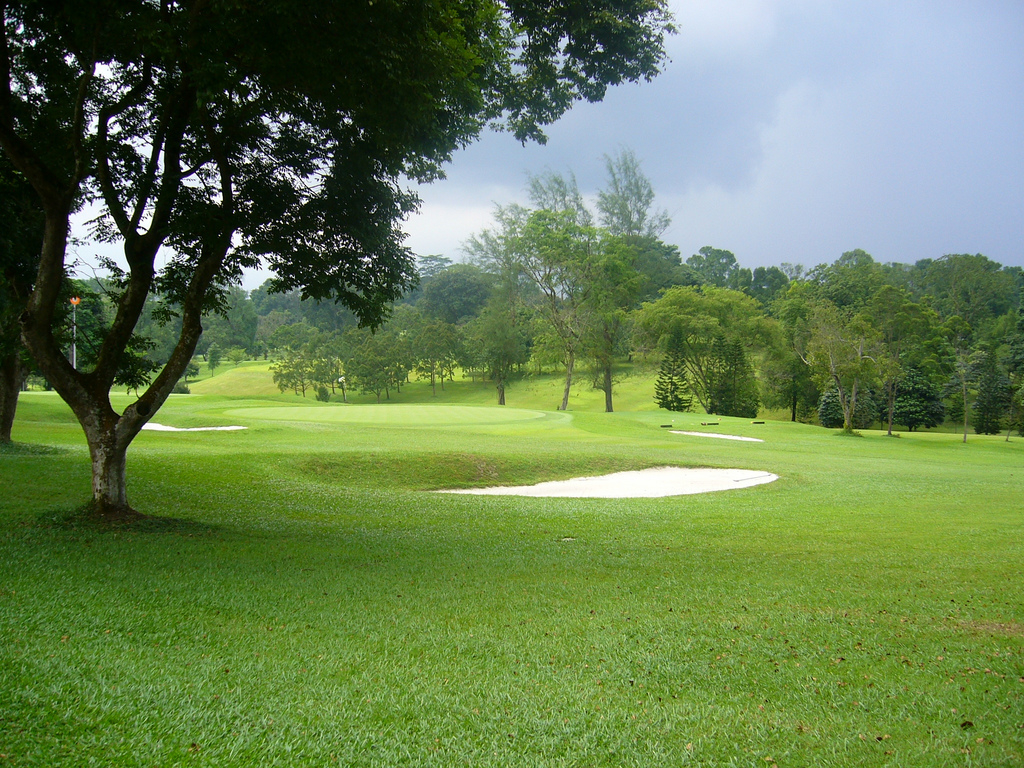As the sport of obstacle course racing struggles into its early adolescence, there is no shortage of opinion about who the sport truly “for,” and the best path to achieve sustained health and growth. Athletes, events and investors are naturally turning to road running events for ideas, but a more productive approach may be to investigate a less obvious model – golf.
Before you get your compression shorts in a bunch and cry out, “obstacle course racing and golf have nothing in common!” let’s examine the similarities:
- Both sports take place on a course where terrain, distance, weather and elevation have an impact on the player’s performance.
- Both sports have a pyramid of participation with a small group of elite competitors at the top of the sport, followed by a middle tier of skilled, competitive players, and very wide base of weekend warriors and hackers.
- The investment of time in training and fitness levels also follow these tiers.
- Golf has hazards. OCR has, well, obstacles.
And, the next time you pour over your course map for the layout of obstacles, notice how it quite nicely resembles a golf course.
Where the comparisons break down is that, as a sport, golf has a few hundred years of development on its side. It also has consistent rules with specific penalties for breaking them. The rules are universal and apply equally no matter what level of the sport you play.
So how can golf solve the OCR problem? Quite simply, obstacle course racing needs course rating and handicap system.
No matter where in the world you play golf, courses have a course rating and a slope rating that describe how difficult the course is for the scratch golfer and how quickly it an average golfer’s scores will rise. The long and a short of it (golf pun intended) is that the ratings measure the difficulty of the course.
Golfers can use this information to make comparisons between courses, and also evaluate their own performance based on the difficulty of the course. We see the impact at the elite levels of obstacle course racing, where athletes certainly have their specialties. Some are better at the steep and wet and muddy conditions of the East Coast, while others prefer the hard, rocky, flatter courses of the West Coast.
The solution for the future of obstacle course racing is not just in rating courses, however. Any golfer knows you need to play a number of rounds on courses that are rated to establish a handicap. And that is where the fun comes in.
Much like the United States Golf Association (USGA) oversees handicaps for golfers, OCR needs to develop a body that exercises governance over a “handicap” that indexes athletes’ performance against rated courses. In the words of the USGA, the handicap system “is to make the game of golf more enjoyable by enabling players of differing abilities to compete on an equitable basis. The system provides a fair Course Handicap for each player, regardless of ability, and adjusts a player's Handicap Index up or down as the player's game changes.”
The problem with OCR right now is that there is no middle ground. You are either a competitive racer chasing after podiums, or you run races know that part of the experience is having to dodge the selfie-takers as you navigate an open wave.
Developing a handicap system would offer race operators a universal metric for building flights into their events. It would be a way for racers to be placed in waves that were evenly matched according to skill.
While there are plenty of question about who would own the rating system and what the expense may be to create it, there is no question that it would benefit the community. Race directors, if they were so inclined, could offer a competitive experience to racers of similar levels in lower-handicap waves. Waves with higher handicaps could offer a quality experience to first-timers and bucket-listers without the pressure or intimidation of having to line up next to a better athlete or make way for them throughout the course.
So then, the answer of who OCR is for, is no longer a matter of “either/or,” but rather an “and.” Obstacle course racing needs the widest base of participants possible. They pay the bills. As much as more established participants may not like the “laugh and splash” crew that just wants a cool Instagram photo, the sport is as much for them as it is the competitive athlete.
Professional golf has managed to grow purses for the elite athletes of its sport by allowing weekend duffers to develop a lifelong love of the sport – not by kicking them out or relegating them to inferior versions of the game. Golf’s system of rules and handicaps allows the sport to stratify itself naturally without alienating the base that is the source of growth and longevity.
As OCR looks forward to the next stage of maturity, and the long-term health of the sport, it would be wise to take a golf lesson.
Disclaimer: The viewpoints expressed by the authors do not necessarily reflect the opinions, viewpoints and official policies of Mud Run Guide LLC, or their staff. The comments posted on this Website are solely the opinions of the posters.



Leave A Comment